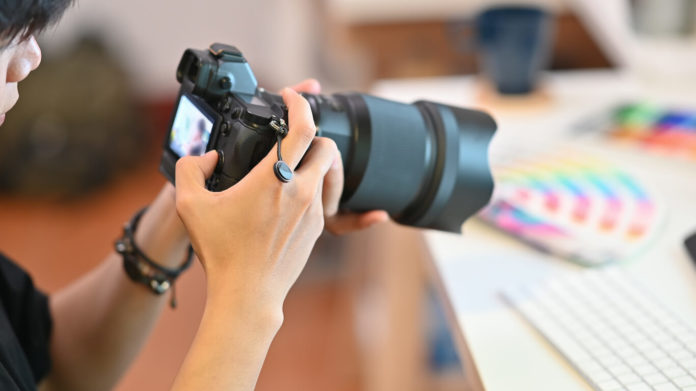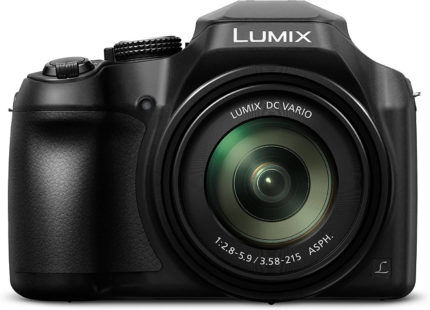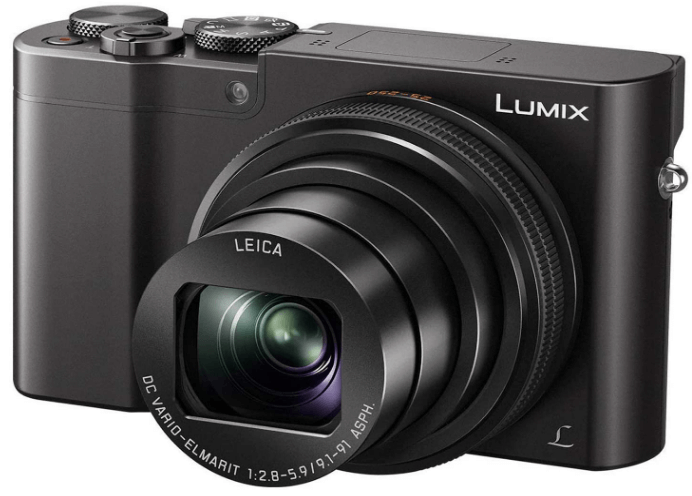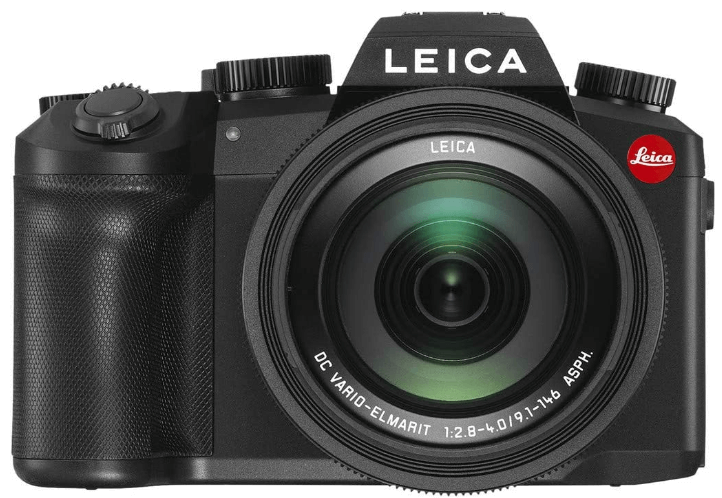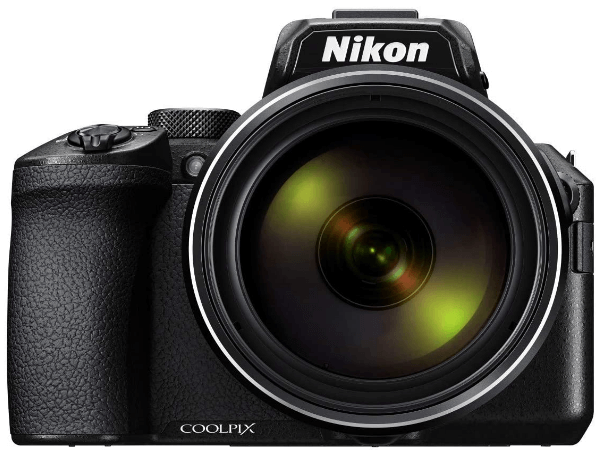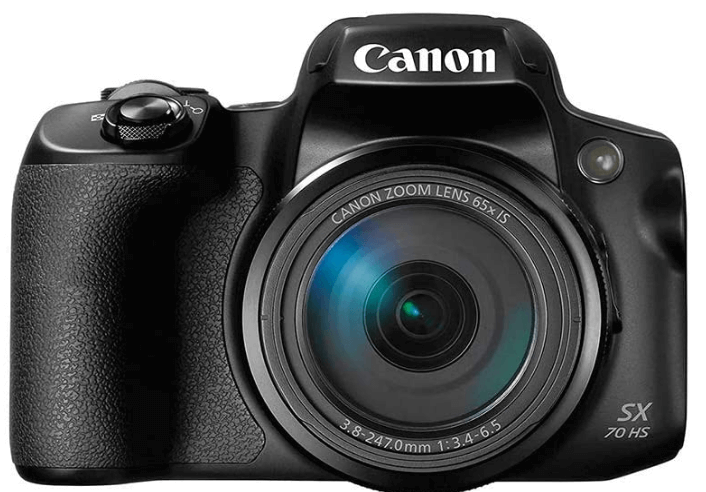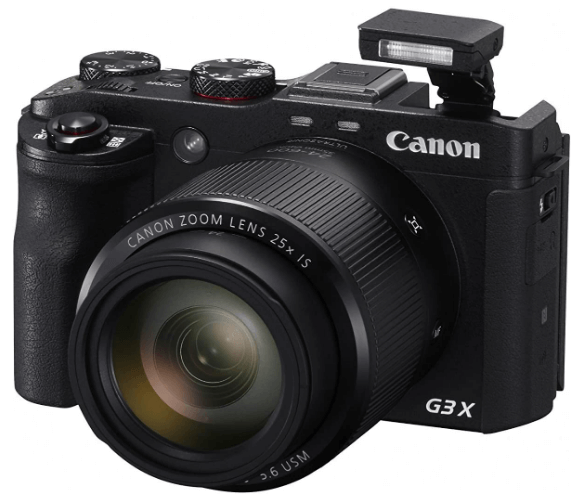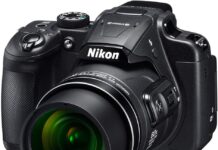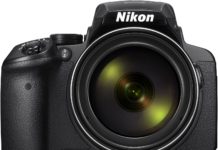Whether you’re new to photography or an experienced shooter, one of the most versatile cameras you can own is a super zoom camera, also known as a bridge camera. These impressive devices offer many of the same features as a DSLR or mirrorless camera but feature a fixed lens with an extraordinarily wide focal length range. Having tested numerous camera systems over the years, I’ve come to appreciate what these specialized cameras bring to the table.
The beauty of a super zoom camera is versatility. The same camera and lens can capture a wide-angle landscape scene, then zoom right in to photograph distant wildlife or sports action. They’re excellent for travel because, although they’re somewhat bulky, you don’t need to pack multiple lenses to cover different shooting scenarios. I’ve taken these cameras on wildlife expeditions and travel assignments where carrying a bag full of telephoto lenses simply wasn’t practical.
Many of these cameras feature zoom lenses capable of covering 20-3000mm equivalent focal lengths—that’s absolutely massive reach. They can all record video too, often in 4K resolution. If you’re considering one of these camera types in 2025, let me share what I’ve learned from real-world use and help you choose the perfect model for your needs.
Contents
- Best Zoom Cameras in 2025
- 1. Nikon Coolpix P1100 – Best Extreme Zoom Camera
- 2. Sony Cyber-shot RX10 IV – Best Overall Quality
- 3. Nikon Coolpix P950 – Best Value Extreme Zoom
- 4. Canon PowerShot SX70 HS – Best for Beginners
- 5. Panasonic Lumix FZ1000 II – Best for Video
- 6. Panasonic Lumix FZ80 – Best Budget Option
- 7. Nikon Coolpix P1000 – Still Relevant
- 8. Canon PowerShot G3 X – Premium Compact Alternative
- 9. Panasonic Lumix ZS100 (TZ100)
- 10. Leica V-Lux 5 – Premium Alternative
- Best Overall Super Zoom Camera for 2025
- Best Budget Super Zoom Camera
- Best Extreme Zoom Camera
- Final Recommendations
What is a Bridge Camera?
Before diving into specific models, let’s clarify what exactly a bridge camera is. These cameras look and feel like DSLRs, with similar ergonomics and substantial grips, but feature a permanently attached lens rather than an interchangeable lens mount. However, you still get manual control over exposure settings, just as you would on a DSLR or mirrorless camera, giving you complete creative control over your images.
The defining feature of bridge cameras is their incredible zoom capability. Modern bridge cameras offer 40x, 60x, 80x, or even 125x optical zoom—far beyond what you’d find in a standard camera lens. To achieve equivalent reach with a DSLR or mirrorless system, you’d need to invest thousands of dollars in super-telephoto lenses. Bridge cameras deliver this capability at a fraction of the cost.
These cameras work in fully automatic mode for point-and-shoot convenience or fully manual mode for complete creative control. This versatility makes them ideal for photographers of all experience levels, from beginners who just want great photos without complexity to experienced shooters who want extreme reach without the weight and expense of pro telephoto glass.
Considerations When Choosing a High Zoom Camera
From my experience testing and using various super zoom cameras, here are the critical factors you need to evaluate when choosing the best one for your needs.
Zoom Range and Optical Quality
Obviously, zoom capability is the primary consideration for these cameras. Modern bridge cameras range from 20x to 125x optical zoom. Think carefully about how much reach you actually need. For wildlife photography where you can’t get close, maximum zoom is valuable. For general travel photography, a more moderate zoom range like 20-600mm might be sufficient and often delivers better optical quality.
More zoom isn’t always better. In my testing, I’ve found that cameras with truly extreme zoom ranges (100x+) sometimes sacrifice optical sharpness, especially at the telephoto end. The lens elements required for such extreme magnification can introduce aberrations and softness. Look for reviews that specifically test edge sharpness and chromatic aberration at maximum zoom.
Sensor Size and Megapixels
Bridge cameras typically use either 1/2.3-inch sensors (smaller) or 1-inch sensors (larger). The 1-inch sensors found in premium models like the Sony RX10 IV offer significantly better image quality, especially in low light with less digital noise. However, they’re paired with shorter zoom ranges and higher prices.
The 1/2.3-inch sensors in most bridge cameras are adequate in good lighting but struggle when light gets dim. As for megapixels, most models offer 16-20 megapixels, which is plenty for prints up to 20×30 inches. Don’t get too hung up on megapixel count—lens quality and sensor size matter more for actual image quality.
Burst Shooting Speed
If you’re photographing fast-moving subjects like sports, wildlife, or birds in flight, burst shooting speed becomes critical. A faster continuous shooting rate (measured in frames per second or fps) gives you more chances to capture the decisive moment. Look for at least 7-10 fps for action photography. Some models offer impressive speeds of 24 fps or higher, though these often come at premium prices.
Autofocus System
When shooting at extreme zoom lengths, manual focusing is nearly impossible—even slight camera shake makes focusing a challenge. A fast, accurate autofocus system is essential. Modern bridge cameras have improved dramatically in this area, with some offering hundreds of focus points and face/eye detection capabilities.
In my testing, autofocus speed and accuracy vary significantly between models. The best systems can lock focus in 0.03 seconds and track moving subjects reliably. Budget models may hunt for focus in dim conditions or when contrast is low. If you’re shooting wildlife or sports, prioritize autofocus performance.
Maximum Aperture
Bridge camera lenses typically have variable apertures, meaning the maximum aperture changes as you zoom. A lens might be f/2.8 at the wide end but only f/5.6 or f/6.5 when fully zoomed in. That narrower aperture at telephoto lengths means less light reaches the sensor, requiring higher ISO settings in anything less than bright daylight.
Cameras with brighter maximum apertures (f/2.8-4) throughout the zoom range perform better in low light and can create more background blur for that professional look. However, they’re typically paired with shorter zoom ranges due to optical design limitations.
Video Quality and Features
In 2025, 4K video recording has become standard even in budget bridge cameras. However, video quality depends on more than just resolution. Check whether the camera offers 4K at 30fps or 60fps (smoother for action). Does it have a microphone input for external audio? Can it record in flat picture profiles for color grading?
The best zoom cameras for video also include features like clean HDMI output, good stabilization during recording, and continuous autofocus that doesn’t hunt. I’ve tested models where the autofocus constantly refocuses during video recording, creating distracting shifts—avoid those if video is important to you.
Image Stabilization
Image stabilization is absolutely critical in super zoom cameras. At extreme focal lengths, even tiny camera movements result in blurred images. All modern bridge cameras include optical image stabilization, but effectiveness varies dramatically between models.
The best stabilization systems can compensate for 4-5 stops of camera shake, allowing you to shoot handheld at shutter speeds that would otherwise guarantee blurred images. In my field testing, good stabilization is the difference between getting sharp handheld shots at 1000mm+ and needing a tripod for everything.
Size, Weight, and Handling
Bridge cameras will never be pocket-sized, but there’s significant variation in size and weight. Models with extreme zoom ranges and large sensors tend to be heavier and bulkier. Consider whether you’re comfortable carrying the camera all day or whether a lighter model suits your shooting style better.
Ergonomics matter too. A well-designed grip makes a big difference during extended shooting sessions. Controls should be logically placed and easy to access without removing your eye from the viewfinder. I prefer models with customizable buttons so I can set up the camera for my shooting style.
Best Zoom Cameras in 2025
Let’s examine ten of the best super zoom cameras available in 2025. I’ve selected models covering different price ranges, zoom capabilities, and feature sets to suit various needs and budgets.
1. Nikon Coolpix P1100 – Best Extreme Zoom Camera
The brand new Nikon Coolpix P1100, released in February 2025, is the latest evolution of Nikon’s legendary extreme zoom cameras. It succeeds the P1000 with even better features and represents the pinnacle of zoom capability in a single camera. The P1100 offers an absolutely staggering 125x optical zoom, covering a focal range equivalent to 24-3000mm. Yes, you read that correctly—3000mm. At maximum zoom, you can photograph craters on the moon or count feathers on a bird hundreds of yards away.
The 16-megapixel back-illuminated CMOS sensor is optimized for the extreme focal length, and while it’s not a large sensor, the back-illumination design helps with low-light performance. The camera records 4K UHD video at 30fps with stereo sound, making it surprisingly capable for video work despite the massive zoom range.
Nikon improved several features over the P1000. The P1100 now includes USB-C charging and data transfer (finally!), Bluetooth 5.2 for better connectivity, and WPA3-SAE Wi-Fi security. The 3.2-inch vari-angle LCD screen is useful for high and low angle shots, and the 2.36-million-dot OLED electronic viewfinder provides a clear view even in bright sunlight.
New scene modes including Fireworks Show and improved Long Exposure Noise Reduction make the P1100 more versatile than its predecessor. The camera also includes a microphone input for external audio and a hot shoe for accessories. At around 3 pounds, it’s substantial, but that weight helps stabilize the camera during handheld shooting at extreme focal lengths.
This is the camera for serious wildlife photographers, bird watchers, and astrophotography enthusiasts who want maximum reach without spending $10,000+ on super-telephoto lenses. Just manage your expectations—at 3000mm, atmospheric haze, heat shimmer, and even slight camera shake become significant challenges. A good tripod or monopod is essential for getting the most from this camera.
2. Sony Cyber-shot RX10 IV – Best Overall Quality
The Sony Cyber-shot RX10 IV remains the gold standard for premium bridge cameras in 2025, and for good reason. While its 25x zoom (24-600mm equivalent) is more modest than extreme zoom competitors, the image quality is in a completely different league. The 1-inch back-illuminated stacked CMOS sensor with 20.1 megapixels produces images that rival many mirrorless cameras.
What sets the RX10 IV apart is its phenomenal autofocus system. With 315 phase-detection AF points covering approximately 65% of the frame, this camera locks focus in just 0.03 seconds—faster than most DSLRs. The autofocus tracking is exceptional, making it superb for photographing birds in flight, sports, and any fast-moving subjects. I’ve shot air shows and wildlife with this camera, and the hit rate for sharp, focused images is impressively high.
The continuous shooting capability is equally impressive at 24 frames per second for up to 249 RAW images. That’s professional-level performance. The f/2.4-4 maximum aperture throughout the zoom range is brighter than most competitors, enabling faster shutter speeds and better low-light performance. The optical image stabilization is excellent, allowing handheld shooting even at 600mm in reasonable light.
For video work, the RX10 IV excels with 4K recording at 24 or 30fps, and you can shoot 1080p at up to 120fps for smooth slow-motion footage. The camera includes a microphone input, headphone jack, and clean HDMI output. The 2.36-million-dot OLED viewfinder is bright and detailed, and the tilting touchscreen LCD is responsive.
Yes, the RX10 IV is expensive for a bridge camera, but you’re getting truly professional image quality and performance. If budget allows and you don’t need extreme zoom reach, this is the finest bridge camera you can buy.
3. Nikon Coolpix P950 – Best Value Extreme Zoom
The Nikon Coolpix P950 offers 83x optical zoom (24-2000mm equivalent) at a more accessible price than the P1100. While the P1100 is newer with some improved features, the P950 remains an excellent choice if you want extreme zoom capability without the absolute maximum reach or latest connectivity features. Note that the P950 succeeded the Nikon Coolpix P900, which offered 83x zoom but is now discontinued in favor of the P950.
The 16-megapixel sensor is identical to the P1100, and image quality is very similar between the two cameras. The P950 shoots 4K video at 30fps and includes both Wi-Fi and Bluetooth connectivity. The 3.2-inch vari-angle LCD and 2.36-million-dot OLED viewfinder make composing shots easy even in challenging conditions.
What I appreciate about the P950 is that 2000mm is more than enough reach for most situations, and it’s slightly lighter than the P1100. The camera handles well with good ergonomics and customizable controls. The dual-detect optical VR (vibration reduction) is effective up to about 5 stops, which is essential when shooting at such extreme focal lengths.
The P950 includes useful features like Snap-Back Zoom (temporarily zoom out to reacquire a subject, then snap back to full zoom), Moon and Bird scene modes for simplified shooting, and RAW capture for maximum editing flexibility. There’s a microphone input for better audio when recording video.
If you’re considering the P1100 but finding the price too steep, the P950 delivers 90% of the capability at a significantly lower cost. It’s my pick for serious wildlife and bird photography on a budget.
4. Canon PowerShot SX70 HS – Best for Beginners
The Canon PowerShot SX70 HS strikes an excellent balance between zoom capability, features, and user-friendliness. With 65x optical zoom (21-1365mm equivalent), it offers more than enough reach for most photography situations while remaining relatively compact and easy to handle. The 20.3-megapixel sensor produces good image quality in favorable lighting conditions.
Canon equipped the SX70 HS with their DIGIC 8 image processor, which provides fast performance and excellent image processing. The camera shoots 4K video and can create impressive time-lapse sequences. One of my favorite features is the ability to grab 8-megapixel still frames from 4K video—perfect when you capture a moment on video and want a photo too.
The autofocus system is capable with good face and subject tracking. Continuous shooting reaches 10 frames per second, which is respectable for action photography. The Zoom Framing Assist feature is genuinely helpful—when shooting at maximum zoom, press and hold the button to temporarily zoom out and reacquire your subject, then release to return to full magnification.
The 2.36-million-dot OLED electronic viewfinder is clear and usable, and the vari-angle LCD screen allows creative shooting angles. Canon’s interface is intuitive, making this camera easy for beginners to learn while offering enough manual control for experienced photographers. The camera includes Wi-Fi and Bluetooth for easy image transfer and remote control via smartphone.
At around 1.36 pounds, the SX70 HS is lighter than the Nikon extreme zoom cameras, making it more comfortable for extended handheld shooting or travel. Image quality isn’t quite at the level of the premium Sony RX10 IV, but for the price, this camera delivers excellent value and capability.
5. Panasonic Lumix FZ1000 II – Best for Video
The Panasonic Lumix FZ1000 II is built around a large 1-inch, 20.1-megapixel sensor, placing it in the premium category alongside the Sony RX10 IV. While its 16x zoom (25-400mm equivalent) is modest compared to extreme zoom cameras, the image quality is outstanding with excellent low-light performance and beautiful color reproduction.
Where the FZ1000 II really shines is video capability. This camera was clearly designed with serious videographers in mind. It records 4K video at 30fps with no recording time limit, which is crucial for long takes or event coverage. The camera can also shoot in various frame rates and quality settings, including options for slow-motion recording. There’s a microphone input for external audio—a must-have for quality video work.
The 5-axis hybrid optical image stabilization is impressively effective, particularly beneficial for handheld video recording. The stabilization works across the entire zoom range and even compensates for walking movement when shooting video. The large 1-inch sensor provides shallow depth of field capabilities that smaller-sensor bridge cameras can’t match, giving your videos a more cinematic look.
For still photography, the FZ1000 II is equally capable with a burst rate of 12 frames per second and a fast f/2.8-4 maximum aperture. The autofocus is quick and accurate, and the 2.36-million-dot OLED viewfinder is excellent. The 3-inch free-angle touchscreen can flip out and rotate, perfect for video recording or shooting at unusual angles.
Build quality is excellent with weather-resistant construction. The camera handles beautifully with well-placed controls and a substantial grip. If you’re serious about video work and want the best image quality in a bridge camera format, the FZ1000 II is a superb choice.
6. Panasonic Lumix FZ80 – Best Budget Option
The Panasonic Lumix FZ80 delivers an remarkable amount of camera for the money. With 60x optical zoom (20-1200mm equivalent), you get extensive reach at a price that won’t break the bank. The 18.1-megapixel sensor produces decent image quality, particularly in good lighting conditions. While it can’t match the image quality of large-sensor cameras, it’s impressive for the price.
The FZ80 includes 4K video recording at 30fps, which is excellent at this price point. The 4K Photo mode allows you to extract 8-megapixel still images from video, and the Post Focus feature lets you change the focus point after shooting—handy when you’re not sure what you want in focus.
The camera features optical image stabilization that’s effective at keeping images sharp when shooting handheld. The autofocus system is reasonably fast with good tracking capability. The 3-inch LCD touchscreen (1.04 million dots) makes menu navigation easy, and the electronic viewfinder is adequate for composing shots.
For beginners or casual photographers who want serious zoom capability without spending a fortune, the FZ80 is hard to beat. It handles well, the controls are intuitive, and it includes both Wi-Fi and NFC for easy image sharing. While experienced photographers will notice limitations in low-light performance and autofocus speed compared to premium models, this camera punches well above its weight class.
7. Nikon Coolpix P1000 – Still Relevant
While the P1100 has succeeded the P1000, the older model remains available and represents excellent value if you can find it at a discount. The P1000 offers 125x optical zoom (24-3000mm equivalent)—the same massive reach as the P1100—with a 16-megapixel sensor and 4K video recording capability.
The differences between P1000 and P1100 are primarily in connectivity and minor features. The P1000 uses micro-USB instead of USB-C, has Bluetooth 4.1 instead of 5.2, and lacks some of the newer scene modes. However, image quality and zoom capability are essentially identical.
If you’re shopping on a budget and find a good deal on a P1000, it remains a capable camera for extreme telephoto work. Just be aware that it’s technically the older model, and support/firmware updates will likely focus on the P1100 going forward.
8. Canon PowerShot G3 X – Premium Compact Alternative
The Canon PowerShot G3 X features a large 1-inch, 20.2-megapixel CMOS sensor paired with a more moderate 25x zoom (24-600mm equivalent). This combination delivers excellent image quality that approaches mirrorless camera standards while maintaining the convenience of an all-in-one design.
The f/2.8-5.6 aperture range is bright, particularly at the wide end, enabling good low-light performance and pleasing background blur. The DIGIC 6 image processor is fast, and the camera offers decent continuous shooting performance. The ISO range extends from 125-12800, providing flexibility in various lighting conditions.
The G3 X includes a 3.2-inch tilting LCD with 1.62 million dots—one of the highest resolution screens in its class. The screen is bright and easy to see outdoors. The camera records 1080p Full HD video rather than 4K, which is a limitation compared to newer models. However, video quality is still good with smooth autofocus during recording.
Build quality is excellent with a weather-resistant design suitable for outdoor shooting. The camera is relatively compact for a bridge camera with a 1-inch sensor. While it’s been on the market for a few years, it remains a solid choice if you prioritize image quality over extreme zoom reach or the latest features.
9. Panasonic Lumix ZS100 (TZ100)
The Panasonic Lumix ZS100 (also known as TZ100 in some markets) is more of a travel compact than a traditional bridge camera, but it deserves mention for its impressive zoom capability in a truly pocket-sized form factor. With 10x optical zoom (25-250mm equivalent) and a large 1-inch, 20.1-megapixel sensor, this camera delivers excellent image quality in a body you can actually carry everywhere.
The f/2.8-5.9 lens is reasonably bright, and the 1-inch sensor performs well in low light—much better than typical compact cameras. The ZS100 shoots 4K video at 30fps and includes the Post Focus feature for selecting focus points after shooting. The 3-inch touchscreen makes operation intuitive, and the electronic viewfinder (though small) is useful in bright conditions.
While 250mm isn’t dramatic zoom compared to bridge cameras, it’s impressive in such a compact package. This camera fits in a jacket pocket yet delivers image quality comparable to much larger cameras. It includes Wi-Fi for image transfer and remote control. Battery life is modest, so carry a spare for all-day shooting.
The ZS100 is perfect for travelers who want excellent image quality and useful zoom in the smallest package possible. It won’t replace a dedicated bridge camera for wildlife or sports, but for general travel and street photography, it’s wonderfully versatile.
10. Leica V-Lux 5 – Premium Alternative
The Leica V-Lux 5 is essentially a rebadged and refined version of the Panasonic Lumix FZ1000, featuring the same 1-inch sensor and 16x zoom (25-400mm equivalent) but with Leica’s quality control and slightly different processing. If you appreciate the Leica brand and are willing to pay a premium for the red dot badge, the V-Lux 5 delivers excellent performance.
The 20-megapixel sensor produces beautiful images with excellent color rendition. The f/2.8-4 maximum aperture is bright throughout the zoom range, enabling good low-light shooting and attractive background blur. The camera shoots 4K video and includes a high-resolution 2.36-million-dot OLED viewfinder.
The 3-inch articulated touchscreen is responsive and easy to use. Continuous shooting reaches 12 frames per second, and the autofocus system is fast and accurate. The camera includes both Wi-Fi and Bluetooth connectivity for easy image transfer and remote control.
Build quality feels premium with excellent ergonomics. The camera handles beautifully and feels substantial without being overly heavy. While it costs more than the similar Panasonic model, some photographers prefer the Leica processing and interface. It’s a lifestyle choice as much as a technical one.
Best Overall Super Zoom Camera for 2025
After testing and comparing these excellent cameras, my top recommendation for most photographers in 2025 is the Sony Cyber-shot RX10 IV. While it doesn’t offer the extreme zoom reach of the Nikon P1100 or P950, it delivers superior image quality, faster autofocus, and better overall performance than any other bridge camera on the market.
The RX10 IV’s combination of a large 1-inch sensor, exceptional 315-point autofocus system, 24fps burst shooting, and professional video capabilities make it the most versatile choice. The 24-600mm zoom range covers approximately 95% of shooting situations, and the image quality rivals that of mirrorless cameras costing considerably more.
If you’re serious about photography and want a single camera that can handle landscapes, portraits, wildlife, sports, and video with minimal compromise, the RX10 IV is worth the investment. The only reason to choose a different camera is if you specifically need extreme zoom reach beyond 600mm or if budget constraints make the more affordable options necessary.
Best Budget Super Zoom Camera
Invalid table id.For photographers on a budget who still want impressive zoom capability, the Panasonic Lumix FZ80 offers exceptional value. Its 60x zoom (20-1200mm) provides enough reach for wildlife and sports photography, and the 4K video recording is a significant bonus at this price point.
The FZ80 includes useful features like Post Focus, 4K Photo mode, optical image stabilization, and intuitive controls. While image quality doesn’t match premium models, particularly in low light, it’s more than adequate for casual photography, social media sharing, and learning the basics of photography. For beginners or anyone wanting extensive zoom without spending a fortune, the FZ80 is an outstanding choice that won’t disappoint.
Best Extreme Zoom Camera
If maximum zoom reach is your priority—for bird photography, wildlife observation, astrophotography, or any situation where getting physically closer to your subject isn’t possible—the Nikon Coolpix P1100 is the clear winner. Its 125x zoom (24-3000mm equivalent) is simply unmatched by any other camera at any price.
The P1100’s updated features including USB-C, Bluetooth 5.2, improved Wi-Fi security, and refined handling make it a significant improvement over the P1000. While the smaller sensor means image quality doesn’t match large-sensor competitors, the ability to photograph subjects that would otherwise be impossible to capture makes this camera unique and valuable for specialized applications.
Final Recommendations
Choosing the best super zoom camera depends on your specific needs, budget, and shooting style. Here’s how to decide:
Choose the Sony RX10 IV if: You want the best image quality, fastest autofocus, professional video capabilities, and can work with a 600mm maximum focal length. This is the camera for serious enthusiasts who won’t compromise on quality.
Choose the Nikon P1100 or P950 if: You need extreme zoom reach for wildlife, birds, astrophotography, or surveillance. Accept that image quality won’t match large-sensor cameras, but you’ll capture images impossible with any other camera.
Choose the Canon SX70 HS if: You want a good balance of zoom (65x), features, and user-friendliness at a reasonable price. Perfect for beginners who want room to grow.
Choose the Panasonic FZ1000 II if: Video is as important as stills, and you want the large sensor’s image quality with good (though not extreme) zoom range.
Choose the Panasonic FZ80 if: Budget is your primary concern, but you still want impressive zoom capability and modern features like 4K video.
Bridge cameras occupy a unique niche in 2025’s camera market. While mirrorless cameras and smartphones have taken over much of the photography world, super zoom cameras offer capabilities that nothing else can match at comparable prices. A wildlife photographer would need to invest $10,000+ in a mirrorless camera body and super-telephoto lenses to match the reach of a $600 bridge camera.
The technology in these cameras continues improving. The 2025 models offer better autofocus, improved image stabilization, higher quality electronic viewfinders, and more sophisticated video features than ever before. While they’ll never match the ultimate image quality of large-sensor mirrorless cameras with prime lenses, they deliver impressive results in a single, convenient package.
I’ve used bridge cameras alongside professional mirrorless systems, and there are situations where I prefer the bridge camera. When hiking in challenging terrain, traveling light, or shooting in environments where I don’t want to risk expensive gear, a good bridge camera provides peace of mind without sacrificing too much capability.
Whatever model you choose from this guide, you’ll have a versatile tool capable of capturing images across an enormous range of focal lengths. Take time to learn your camera’s strengths and limitations, practice shooting at various zoom lengths, and invest in a good tripod or monopod for stability at extreme focal lengths. With the right technique, modern super zoom cameras can produce impressive results that will surprise you and your viewers.
Last update on 2025-11-27 / Affiliate links / Images from Amazon Product Advertising API


